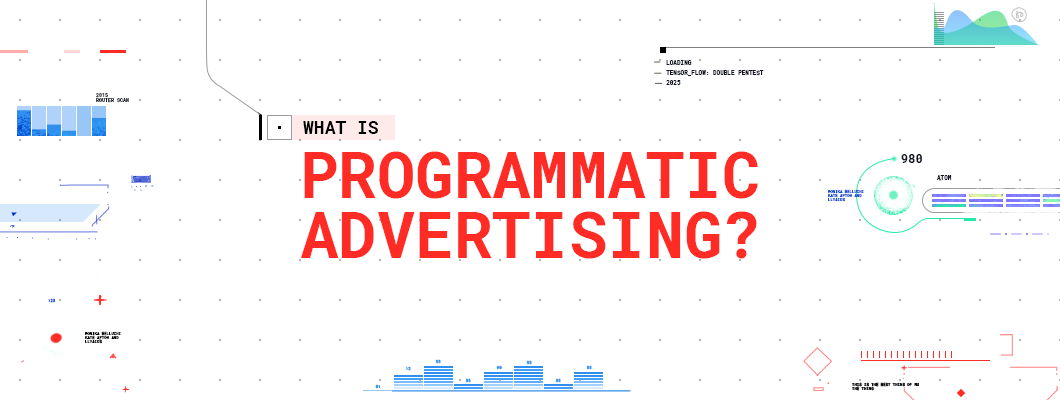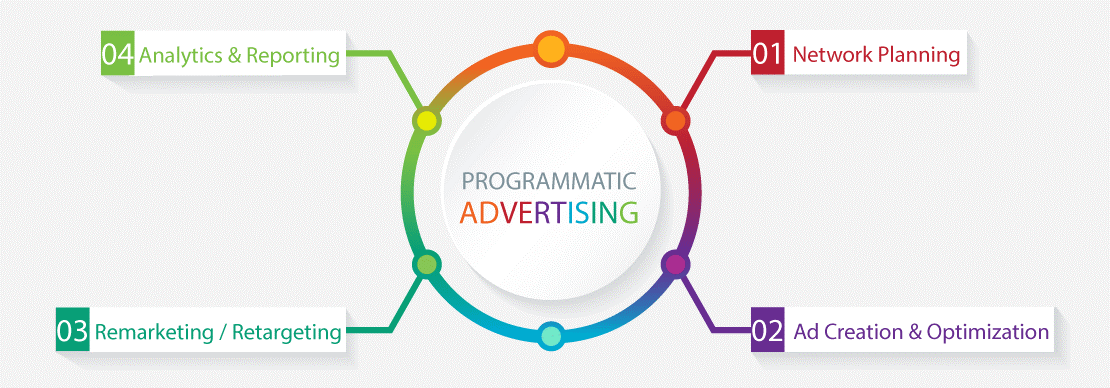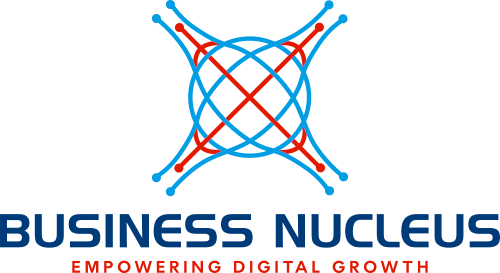What Is Programmatic Advertising?

Best Ad Image Sizes for Google and Social Media Marketing
January 30, 2020
SEO vs. PPC Advertising – Which is best?
February 24, 2020Programmatic Advertising
Capturing the attention of potential consumers in the modern digital world and understanding the ecosystem is not a simple task. According to the internetlivestats’s figures, there are almost 1.7 billion websites on the internet, more than 7 Billion people consuming media in the world and an additional 2.9 million and 2.0 million applications on Google Play Store and Apple App Store.
The process of reaching out to the right consumers is further complicated since consumers have several digital media consuming devices, ranging from smartwatches, voice assistants, smartphones, personal computers and all the way up to Smart Televisions. Negating the importance of any one of these devices can have a serious toll on factors including costs, reachability and conversion of potential consumers into buyers.
In order to tackle all the competition and the showstoppers, newer and more effective ways of reaching out to the right audience. One such effective way is known as Programmatic Advertising.

What is Programmatic Advertising?
Simply put, Programmatic advertising refers to the use of digital applications or software to purchase digital advertising. Unlike the traditional process that involves RFPs or Request for Proposals, manual order insertions or human negotiations Programmatic marketing differs. Programmatic Advertising is geared toward using real-time digital placements of your ads.
It is a way of automatically making transactions more efficient and effective. There are several programmatic platforms that consolidate the efforts put into advertising under a single umbrella. The basic ideology behind these platforms is based on the segmentation of the audience in order to match the right consumer with the product that he/she is the most likely to purchase or be interested in.
How does Programmatic Advertising work?
There are several confusions around how exactly Programmatic Advertising works. The process of buying and selling advertisements inventory via an exchange that connects publishers and advertisers. These exchanges have segmented users based on factors such as demographics (gender and age). They also offer ad targeting via geography (10 mins from a market), interests (cycling, soccer, swimming), behaviors (consume food during lunchtime), time of day, weather (cold/warm), device (smartwatch, smartphones, etc.).
The data is collected using modern algorithms based on technologies such as Artificial Intelligence/ This data is fed to a platform based on consumer information. After signing up on such a platform, the user is kept informed about how well the advertisement is performing. Also which particular platform or age group is taking more interest in the advertisement. This information can be used to tweak the ads for better performance.
Historically, the process of direct buys was the way digital ads were placed. This means that you are placing an advertisement on a website and that advertisement stays on the website. You could be targeting a lot of uninterested users this way. For instance, if you are selling sweaters online then you would be ideally looking for visitors who are connecting to that website that comes from a region where the weather is cold rather than someone belonging to a region where the weather is hot.
Alternatively, Programmatic Advertising allows you to pick the kind of consumers you would like to advertise to based on the factors of segmentation. So, you can pick the age of your potential customer and the programmatic advertising platform will advertise your ad to people of that age group.
This is the reason why Programmatic advertising is more effective and targeting as compared to conventional methods.

Is Google Ads Programmatic Advertising?
So, if you are slightly familiar with digital marketing you might be wondering if Google Ads comes under the umbrella of Programmatic Advertising. The answer to this question is NO. Although, Google Ads and programmatic advertising are similar in several aspects there are some key differences.
The important thing to understand is that the Google Display Network or GDN is an advertising network. This network connects you to several publishers. On the other hand, Programmatic advertising is a method of buying ad space using automated technology in real-time. The true comparison should be on how ads are run via each platform.
Programmatic advertising also uses real-time bidding, something Google doesn’t exactly offer as there are delays up to a few hours or even a day with Google Ad metrics.
Google Display Network
Using the Google Display Network, a user can choose target audiences based on interests, demographics, domain, and other criteria. The user can set schedules for their ads and placements within a website, a mobile application, or even a specific page of a website.
For instance, you can target people from the Australian region above the age of 20 who visit pages related to “clothing” on Wikipedia. This placement is pre-configured based on a bidding criterion.
Programmatic Ad Exchanges
Unlike Google Display Network, the programmatic advertising makes use of DSP (display-side network) and SSP (supply-side platform). In a nutshell, there is no middleman which in the case of Google is the GDN. The DSP is used to key in the visitor type you want to target. Whereas, the SSP conveys the availability of ad inventory to the exchange.
For instance, when a user visits a website, the user is assessed based on his/her information. If it matches the specifications you set in your campaign your ad is then displayed. The advertiser with the most competitive bid will have his/her advertisement on the webpage. This process is also known as RTB or Real-time bidding.
GDN vs. Programmatic Advertising
Google Display Network has a huge audience, it has access to all the information of the websites registered under their Google Display Partner program. This contributes to almost 70% of the advertising on the web. On the flip side, a DSP or a display-side platform collects information from third-party ad inventories and ad exchanges. These include but are not limited to; AdScale, Rubicon Project and even Google’s, collectively, this sums up to 95% of the web.
Comparing the two, if you want to have a wider reach than going with the Programmatic Advertising is just the right way to go. There are a variety of platforms that can be utilized. By understanding your lead generation goals you can find the correct platform.
Contact Business Nucleus Today to discuss how Programmatic Advertising and marketing can help your business.




